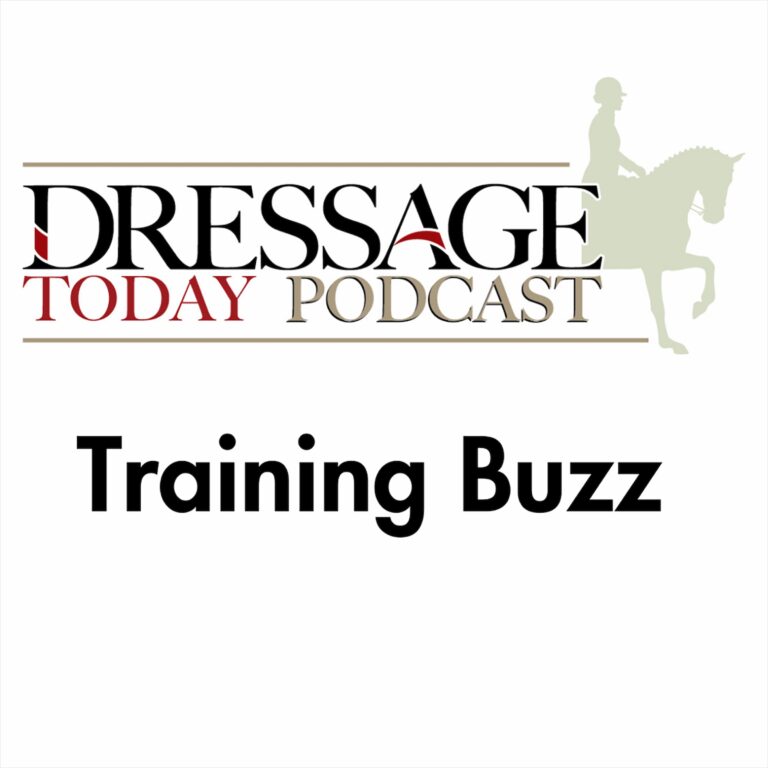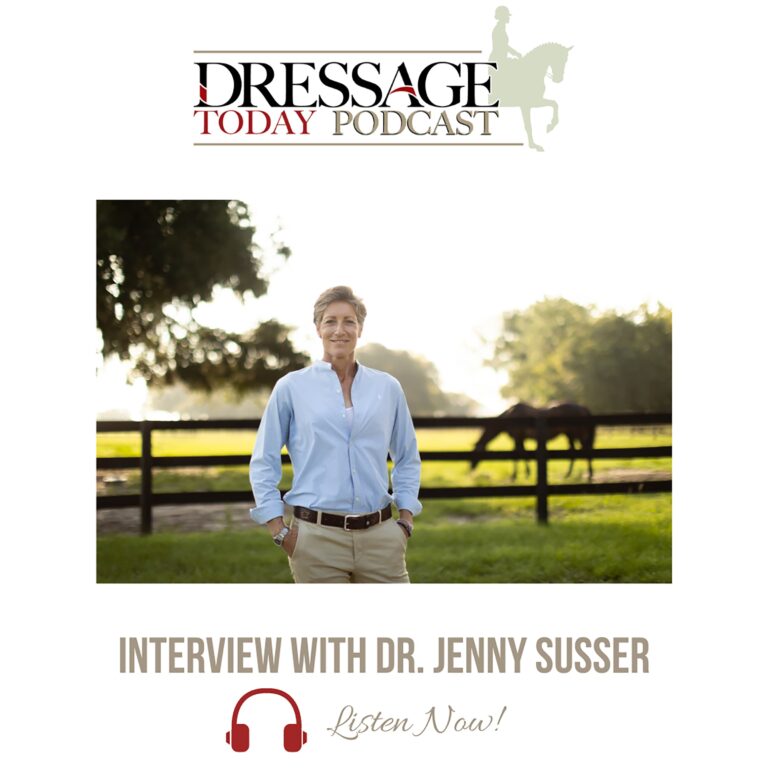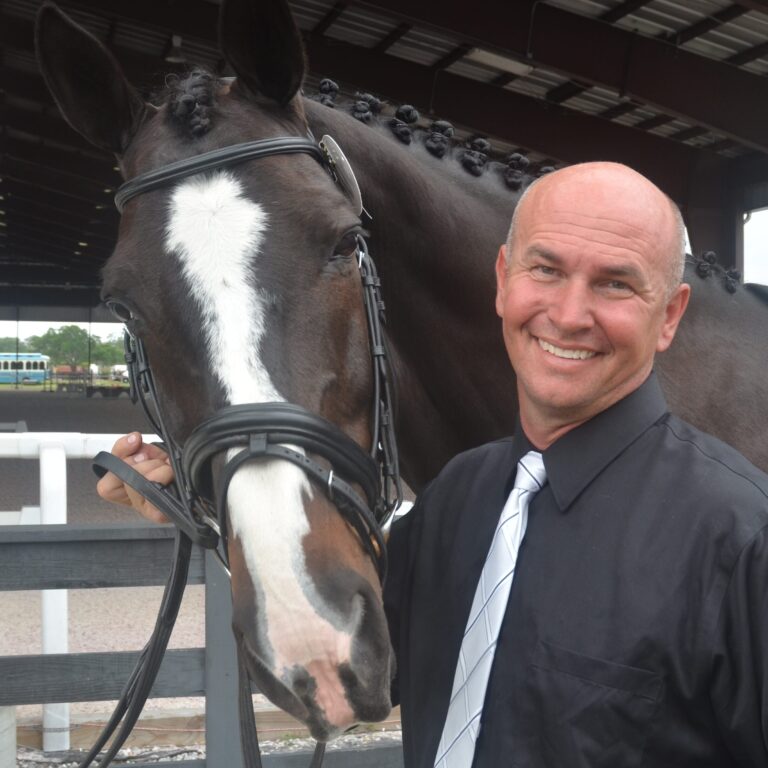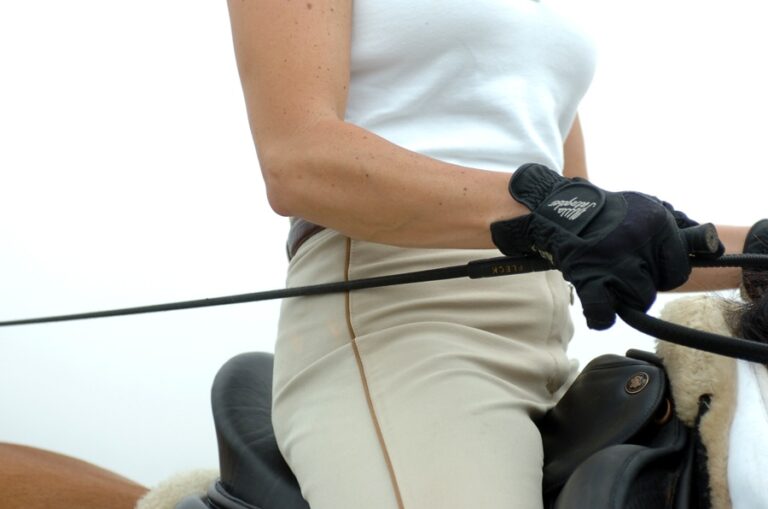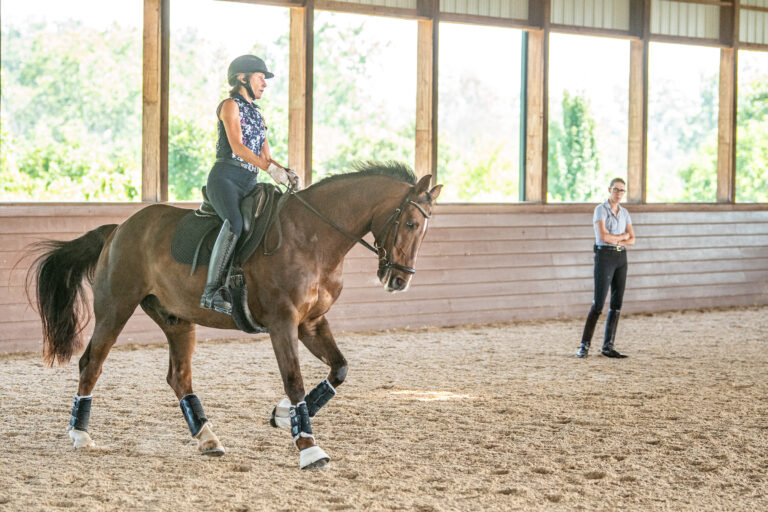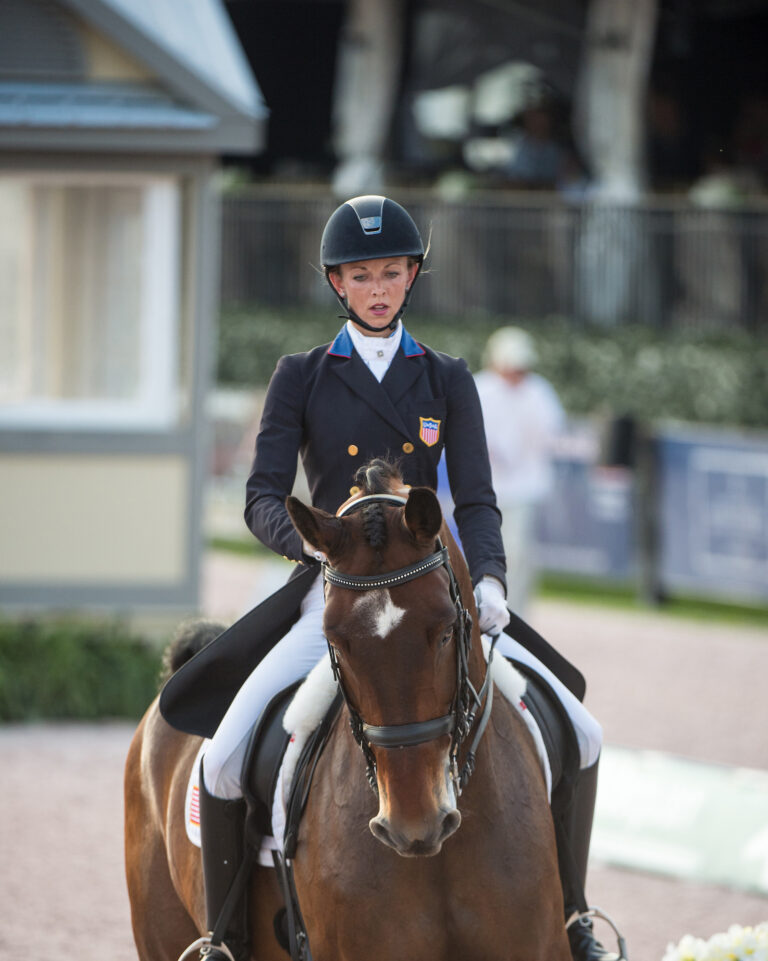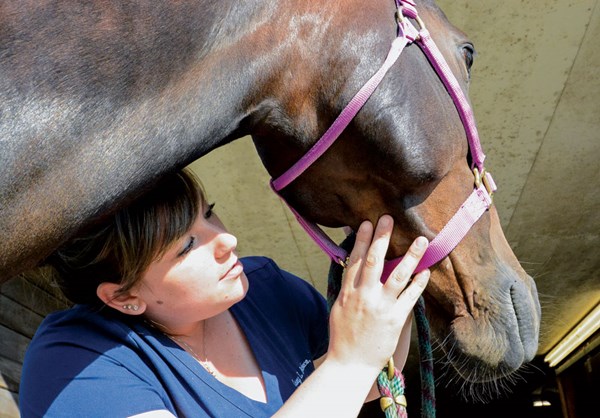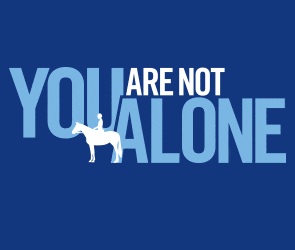This month I would like to stir the pot a little.
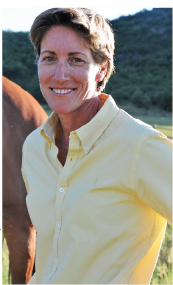
Over the past year, DT has been taking reader questions for me to answer here and I have noticed that in every chunk of questions, there is always something about fear or previous injury from “too much horse” or the like. I spent five years traveling the country giving mounted sport-psychology clinics called “Riding With Confidence” and I still work with riders individually every day from all disciplines and ages, so I feel I have a pretty good range of exposure to our equestrian culture. While writing this piece is risky for me, I feel that not bringing this up is only out of fear of people disagreeing with me or not liking me. But since I am committed to more than that, here goes.
Disagreement creates strong feelings on both sides of any issue, which makes tackling issues that elicit disagreement or even controversy challenging and even avoided these days. Discourse is a necessary element, meaning that having difficult and uncomfortable conversations with the commitment to getting to the other side while at the same time having compassion and seeking understanding of the other side is the solution. A tall order, I know.
We seem to have lost our capacity to disagree with each other these days and that is more costly than we realize. As you read this, I ask that you look for a few things. One: Your level of discomfort. My Grammy Lil always said, “You only become defensive when you have something to defend.” For me, those wise words have provided a handy tool for self-awareness during conflict more often than I care to admit. Two: Can you lower your emotions enough to have a difficult conversation that produces a result? And three: Can you see the other side as simply a difference in opinion and not bad, wrong or punishable?
The issue I want to bring up is the overhorsed amateur. The main players in this game are the amateur (client) and the trainer. What I have seen and heard illuminates a problem we have in dressage that needs to be addressed. Some (not all) trainers encourage or allow amateurs to buy “too much horse” with the promise that they will train them up for the amateur to someday ride. Take a deep breath and focus on the some part. I have seen just as many wonderful horses paired with amateurs riding and having a great, successful time. What I want out of this conversation is for us all to raise the bar of expectation, behavior, and responsibility. The better we all are, the better we all are.
Trainers have one of the toughest jobs in the world. Many trainers become trainers because they can ride anything, and so they are asked to help with difficult horses early on. That leads to teaching lessons because everyone wants to be able to ride like they do. Unfortunately, being able to ride anything is not exactly teachable and many of those personality types don’t have an affinity for teaching to begin with. But it’s a trap for the rider of all horses because they love horses and jump at the opportunity to get paid to ride…and so the slippery slope begins. Making a living as a trainer in the dressage world is beyond difficult. It is fee for service and so the more you work, the more you make. Horses get injured all the time and an injured or lame horse means no money that week or month. The rent still has to get paid and so the scramble ensues. Buying a horse for a client that has a guaranteed year or two of training is actually an excellent business model—for the trainer. The problem is that it sucks for the amateur.
The pitfalls in this model are actually not that difficult to overcome with honest communication developed around realistic goals and capacities—for the horse, the amateur and the trainer.
Most of the horses I have seen (within the context of this issue) were unlikely to ever become rideable for the amateur but this was not discussed powerfully enough. There is a huge degree of responsibility of the amateur here to be well connected to their skill set and their future capabilities as a rider. The dream of riding Grand Prix weighs heavily on this kind of decision making and errors occur as a result. No one wants a small, rideable, not-flashy horse, however most of us need just that.
I had a lovely woman come to a clinic once with two horses: a small, wonderful horse that she had an amazing relationship with, and a three-year-old, 17-hand warmblood that she was terrified of. She asked me to give her the confidence to ride the young horse. I respectfully declined. Gasps escaped the gallery. This woman, as lovely and devoted as she was, was a bit older and, due to an old injury, she had less physical ability than this young, athletic horse commanded. It was simply not safe for her to ride this horse now and maybe not ever. The confusing part was that her partnership with the smaller horse was magnificent! But she wanted a big, flashy mover like everyone else had.
With as much courage as I could muster, I suggested she sell the young horse to someone who could ride him and honor his talent and spirit. Then I looked to the trainer and suggested she do some soul-searching to discover why she would compromise so much here. It was a set-up for failure all the way around and not saying something would have made me complicit. The level of discomfort in the arena and for everyone in attendance was palpable but I remained committed to the future and a vision of safety, fulfillment and even fun. At lunch, almost every one thanked me for saying the unsayable.
The end of the story is a good one. The woman came back to the same clinic the next year to thank me and tell me she had decided to sell the horse and he went on to have a great show career with a trainer (because he was not an amateur’s horse to begin with). She was also having the time of her life with her smaller horse, not only because of their relationship but the pressure of the young horse had lifted, freeing her up to enjoy her riding.
Not that trainers need more pressure or responsibility in their daily lives, but I would put a little more responsibility on the trainer to have this picture clarified since most amateurs rely heavily on the trainer’s opinion and direction. There are plenty of amateurs that are completely happy being owners and not riding, but that is a different scenario. It is the promise of the not promise-able future that bothers me, disappoints clients, creates danger and ultimately costs everyone in the relationship.
The long-term cost is usually in the trainer-client relationship because at some point, the amateur realizes they will never ride this horse, feels some sort of deceit from the trainer and the relationship falls apart, causing the trainer to lose the guaranteed years of training anyway. And what about the horse? The pressure the trainer has to make him/her ride-able will have an impact and will cause the trainer to make different decisions in training than on a horse without that kind of pressure.
There will be discomfort and disagreement in horse-buying and training situations no matter what, it is just a matter of whether you tackle it at the beginning for a great set-up or you initially avoid it and try to survive it on the backend. You get to decide when you are uncomfortable, but I promise, you will be uncomfortable at some point. I vote for “before” because it is typically shorter in duration, has much more potential for the relationship surviving, creates a foundation of trust that will come in handy during future disagreements (which will happen) and the truth creates power and possibility.
Conflict happens. Avoiding it is not a good or lasting strategy. Individual differences are inherent in people, even though we are all part of the same community. It is these very differences that create change, invention and excitement in relationships, yet we need to have tools to deal with them when then create disagreement. It is the same thing with your horse, believe it or not. The strength of any relationship lies in the ability to problem-solve and get through uncomfortable conversations filled with disagreement. Just because we disagree doesn’t mean we don’t respect or care for each other. It only means we disagree, which actually creates the opportunity to learn from each other. Stay focused, stay committed, and most of all, be kind to yourself.


